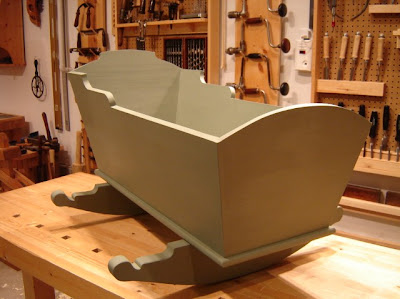For a long while, all was right with the world. Then something happened - I discovered the power of shadows. Directional light. It's a whole new world.
What I had was very bright, but very flat. No shadows. Time for an overhaul. I changed to halogen track lighting. And after hours on top of ladders, I came up with a set-up I really like - most on the ceiling, but one smaller track on the wall opposite the bench. I tried to balance general area lighting with the needs of specific work areas. It's not as bright, in an overall sense, but it is decidedly easier on my eyes, and even my mood. Details really stand out under the directional light. Plane tracks for example - where the florescent lights washed out the surface of the board, the directional lights really make the tiny ridges jump into relief.
Here are three sets of before (left) and after (right) photos. They don't really do it justice, but I think you can get a sense of the difference (especially if you click on them to make them larger). And, as a secret bonus, since they were taken months apart, it's also kind of fun to see how many differences there are in the shop details - at least for me - it reminds me of something in the old "Highlights" magazines they had in my doctor's office when I was a kid...






Side Note: in the third pair of photos you can see the sole survivor from my pre-neanderthal days. Even though it has not been plugged in for over three years, I have hung on to the bandsaw for several reasons:
1. It was my first large powertool, and as such has residual sentimental value.
2. I dream of building a small wooden boat - and resawing that much wood might be too much even for me - I suppose at some point idealism does connect to pragmatism...
3. It serves as a handy rack for various objects, such as: the full face shield and ear protection that I no longer need to wear, the tool rests for my spring-pole lathe, and the breast bib for occasional use with the shavehorse.



















